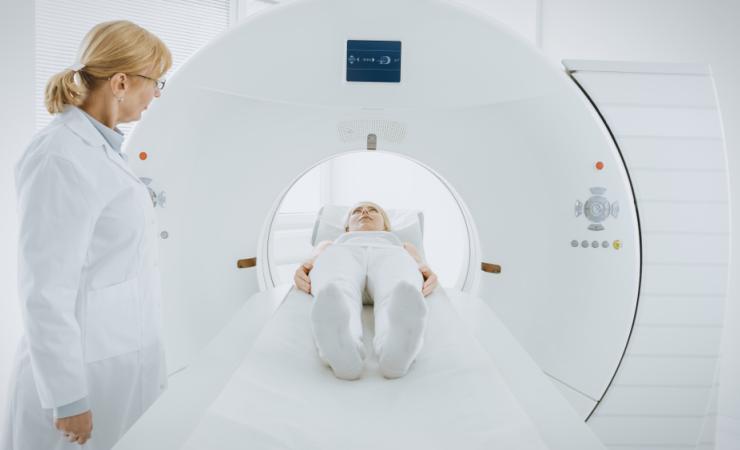One of the clearest ways to help confirm the diagnosis of Alzheimer’s disease is to check the brain for a build-up of abnormal proteins called amyloid-β. The proteins form plaques which can be deposited up to two decades before clinical symptoms start.
Fortunately amyloid plaques can be detected even at this early stage through a brain scan using positron emission tomography (PET). The procedure involves injecting a radioactive substance into the body and then scanning for its signal to generate 3D images of the brain which are then analysed for the presence or absence of amyloid in the grey matter of the brain.
PET scan technology is commonly used to measure how tumours respond to treatment in oncology. However its use for detecting early signs of Alzheimer’s disease holds a lot of potential, as early detection and treatment could delay the onset of more serious symptoms.
“Clinical trials in the Alzheimer’s disease field are increasingly examining patients with earlier [stages of the] disease,” says Medical Leader Dr Gill Farrar of GE Healthcare. “Biomarkers such as amyloid PET are able to detect the beginnings of pathological changes and hence help enrich clinical trial recruitment for these studies.”
A pan-European study of memory clinic patients
In a recent study published in JAMA Neurology, Dr Farrar and colleagues demonstrated how useful PET brain scans could be to diagnose patients at different stages of Alzheimer’s disease. The authors were part of the Innovative Medicines Initiative (IMI) funded AMYPAD project, which finished last year. The study investigated if amyloid PET imaging could improve Alzheimer’s disease diagnosis. Patients in the study had either subjective cognitive decline, mild cognitive impairment or where Alzheimer’s disease was considered in the differential diagnosis. Their study was named the AMYPAD Diagnostic and Patient Management Study (DPMS). It was led out of the Geneva Memory Centre by Professor Giovanni Frisoni, who worked across eight memory clinics in Europe, and was assisted by Daniele Altomare, the first author on the paper.
The DPMS followed the typical diagnosis workflow of these memory clinics in approximately 800 patients. In the first baseline consultation, medical specialists ‘screened’ the patient with cognitive examinations to narrow down the possible diseases based on symptoms. This was accompanied by a structural CT or MRI scan.
The patients were then randomised into one of three groups. The first group would have a PET scan early, i.e. within one month of the baseline visit. The second would have a scan 6 to 10 months after the baseline visit. The third was a ‘real world’ free choice group; here the scan was performed at the discretion of the physician at any time in the observation period. The scan allowed the physician to make an aetiological assessment to inform their diagnosis and treatment plan.
In the study, roughly 30% of the participants had subjective cognitive decline and were at risk of preclinical Alzheimer's disease; 40% showed mild cognitive impairment; and a further 30% had clear signs of dementia.
PET scans boost earlier diagnosis of Alzheimer's disease
After reviewing the data, they were able to show that access to amyloid PET scans resulted in aetiological diagnoses with very high certainty in 40% of patients within the first three months of the patient’s first visit compared to those where the scan was performed 6-10 months later (11%). Additionally knowing the PET scan result also led to changes in diagnosis; for example if the scan was negative, a diagnosis of Alzheimer’s disease could be ruled out.
“The results show the clinical impact of having aetiological information in increasing the diagnostic confidence of the physician,” said Dr Farrar. “This information could be particularly important in the future as being able to confirm the presence of amyloid is required prior to the initiation of amyloid targeted therapies.”
The scans have also proven to be the preferred choice of patients. Another way of detecting amyloid build-up is to extract cerebrospinal fluid from the spine for analysis, which can also provide extra biomedical information. In the ‘free choice’ group, 11% of participants explicitly wanted to undergo an amyloid PET, while another 5% chose the scan because they refused the lumbar puncture procedure.
Dr Farrar says that recruitment into the AMPAD study was completed last year, and she and her colleagues are now analysing and reporting on the vast amount of data. They aim to soon have further results based on the dataset, which they plan to present at several conferences on Alzheimer’s disease this year.
AMYPAD was supported by the Innovative Medicines Initiative, a partnership between the European Union and the European pharmaceutical industry.
